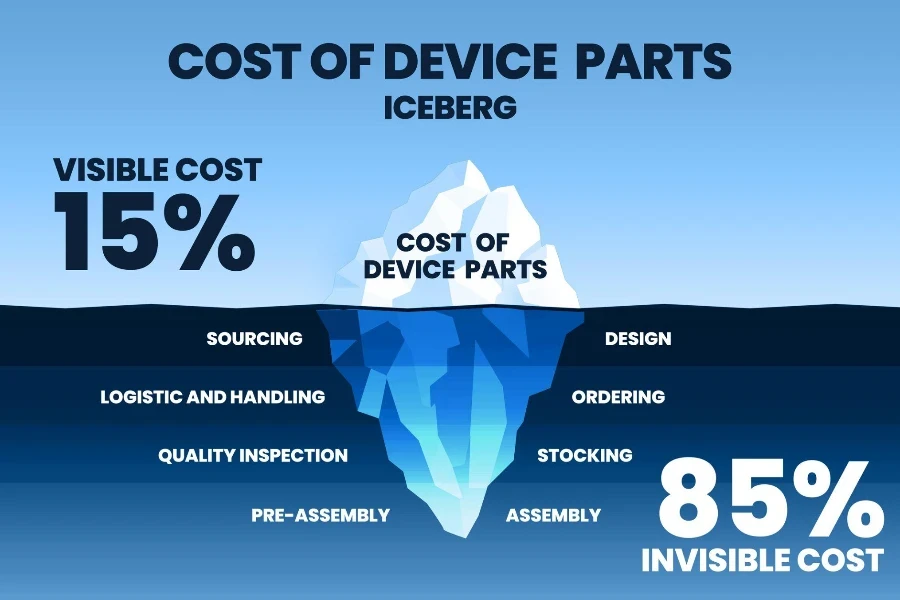In an era where efficiency and value creation are paramount, strategic sourcing stands out as a cornerstone in the architecture of successful businesses. This procurement method does not merely focus on cutting costs but emphasizes building strong, mutually beneficial relationships with suppliers to ensure long-term value creation. By understanding and implementing strategic sourcing, companies can achieve a competitive edge, fostering innovation and sustainability in their supply chain operations. This article aims to demystify strategic sourcing, breaking down its components and illustrating its significance in the modern business landscape.
Table of Contents:
– What is strategic sourcing?
– The strategic sourcing process
– Benefits of strategic sourcing
– Challenges in strategic sourcing
– Future trends in strategic sourcing
What is strategic sourcing?

Strategic sourcing is a systematic and fact-based approach for optimizing an organization’s supply base to improve the overall value proposition. This methodology goes beyond mere price negotiations, focusing on assessing and selecting suppliers based on various criteria such as quality, reliability, and service. The goal is to develop a deep understanding of the company’s spending and supply markets to make informed decisions that support the organization’s strategic objectives and financial goals.
The evolution of strategic sourcing reflects the changing dynamics of global markets. Initially, businesses sought to minimize costs in response to economic pressures. However, today’s strategic sourcing models emphasize resilience, sustainability, and innovation, recognizing that supplier relationships are integral to a company’s success. By aligning procurement strategies with business goals, companies can navigate market complexities more effectively.
Strategic sourcing is not a one-size-fits-all solution. It requires a tailored approach, considering the unique needs and challenges of each organization. This adaptability makes strategic sourcing a powerful tool for companies across various industries, enabling them to stay competitive in an ever-evolving marketplace.
The strategic sourcing process

The strategic sourcing process is a cyclical, multi-step approach designed to ensure continuous improvement and alignment with business objectives. It typically begins with a thorough analysis of the organization’s spending and supply needs, followed by market research to identify potential suppliers. The process involves several key steps:
- Spend Analysis: This initial phase involves collecting and analyzing data on the organization’s current spending patterns. The goal is to identify opportunities for consolidation and cost reduction.
- Market Analysis: Understanding the supply market is crucial for identifying potential suppliers and evaluating risks and opportunities.
- Supplier Evaluation and Selection: Suppliers are assessed based on criteria such as cost, quality, reliability, and alignment with the company’s strategic goals. This step often involves negotiating terms to ensure the best possible value.
- Contract Negotiation: Finalizing contracts that reflect the agreed-upon terms and conditions is a critical component of the strategic sourcing process.
- Implementation and Relationship Management: Successful strategic sourcing requires effective implementation of the sourcing strategy and ongoing management of supplier relationships to ensure continuous improvement.
This process is not linear; it encourages regular review and adjustment to respond to changing market conditions and business needs. Effective strategic sourcing demands cross-functional collaboration within the organization, ensuring that procurement decisions support overarching strategic objectives.
Benefits of strategic sourcing

Implementing strategic sourcing can yield significant benefits for organizations, impacting not only the bottom line but also operational efficiency and market competitiveness. Key advantages include:
- Cost Reduction: By systematically analyzing spending and leveraging supplier relationships, companies can achieve substantial cost savings.
- Risk Mitigation: Strategic sourcing helps identify and assess risks in the supply chain, enabling organizations to implement strategies to mitigate these risks.
- Enhanced Supplier Relationships: Fostering strong, collaborative relationships with suppliers can lead to improved service levels, innovation, and flexibility.
- Improved Quality and Service: Selecting suppliers based on comprehensive criteria ensures that products and services meet the organization’s quality standards.
- Strategic Alignment: Aligning procurement strategies with business objectives ensures that every sourcing decision supports the company’s long-term goals.
Challenges in strategic sourcing

Despite its benefits, strategic sourcing is not without challenges. Organizations often face obstacles such as:
- Data Complexity: Managing and analyzing vast amounts of data to inform sourcing decisions can be daunting.
- Change Management: Implementing strategic sourcing requires significant changes in processes and mindset, which can encounter resistance within the organization.
- Market Dynamics: Rapidly changing market conditions can disrupt sourcing strategies, requiring constant vigilance and adaptability.
- Supplier Management: Building and maintaining strong supplier relationships demand time and resources, which can strain internal capacities.
Addressing these challenges requires a committed leadership team, a clear strategic vision, and the willingness to invest in the necessary tools and skills to navigate the complexities of strategic sourcing.
Future trends in strategic sourcing

The future of strategic sourcing is shaped by technological advancements, evolving market demands, and the increasing importance of sustainability and ethical practices. Trends to watch include:
- Digital Transformation: Automation and digital tools are streamlining the sourcing process, enabling more efficient data analysis and decision-making.
- Sustainability Focus: Companies are prioritizing sustainable and ethical sourcing practices, reflecting consumer values and regulatory pressures.
- Supplier Collaboration: There is a growing recognition of the value of deep, collaborative relationships with suppliers to drive innovation and resilience.
Conclusion
Strategic sourcing is a critical component of modern business strategy, offering a pathway to enhanced efficiency, cost savings, and competitive advantage. While challenges exist, the potential benefits make it an invaluable process for organizations aiming to optimize their supply chain operations. As markets continue to evolve, strategic sourcing will remain a dynamic, essential practice for businesses seeking to navigate the complexities of the global economy.




